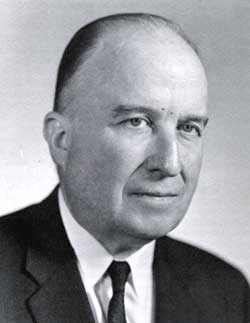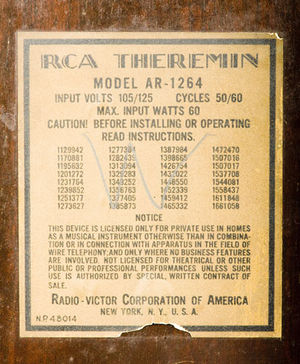Electronic Music Synthesizer: Difference between revisions
From ETHW
No edit summary |
(CSV import of Timeline data) |
||
| (3 intermediate revisions by one other user not shown) | |||
| Line 1: | Line 1: | ||
<p>'''''This article is a stub. You can help the | <p>'''''This article is a stub. You can help the ETHW by expanding it.''''' </p> | ||
<p>[[Image:Olson.jpg|thumb|left|Harry Olson]][[Image:RCA Theremin5.jpg|thumb|right|Image courtesy of Cantos Music Foundation, www.cantos.ca]] </p> | <p>[[Image:Olson.jpg|thumb|left|Harry Olson]][[Image:RCA Theremin5.jpg|thumb|right|Image courtesy of Cantos Music Foundation, www.cantos.ca]] </p> | ||
| Line 6: | Line 6: | ||
<p> </p> | <p> </p> | ||
[[Category:Engineering and society]] | |||
[[Category:Leisure]] | |||
[[Category:Music]] | |||
[[Category:Signals]] | |||
[[Category:Signal_generation_&_recording]] | |||
{{Timeline | |||
|Date=1/1/1955 | |||
|Priority=Electrical | |||
|Description=Harry Olson and Herbert Belar completed the first modern electronic music synthesizer in 1955 at the RCA laboratories at Princeton, NJ. Called the RCA Mark I Sound Synthesizer, the invention was to research sound properties, and was later moved to the Columbia-Princeton Electronic Music Center. | |||
}} | |||
Latest revision as of 06:45, 23 November 2017
This article is a stub. You can help the ETHW by expanding it.
In 1955, Harry Olson and Herbert Belar completed their work on the first electronic music synthesizer at RCA's David Sarnoff Research Center in Princeton, New Jersey. It quickly became of interest to avant-garde musicians and composers. Olson and Belar published an article entitled "Electronic Music Synthesizer" in 1955. The RCA Mark I Sound Synthesizer was intended to reduce the cost of unionized musicians in producing records and soundtracks, but RCA Victor Division ultimately rejected the technology. The Mark II was donated to the Columbia-Princeton Electronic Music Center and the Mark I given to the Smithsonian Institution.

